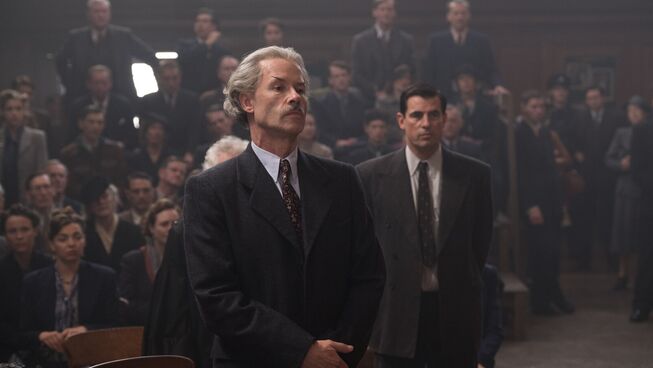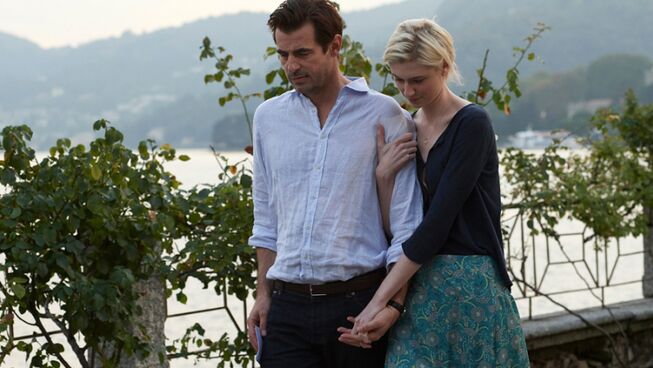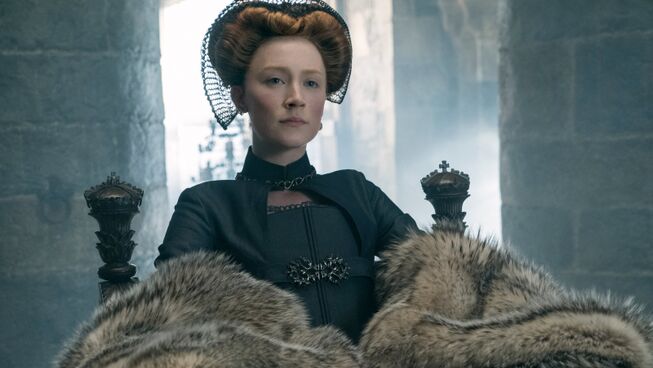
3.5 out 5 stars
When we think of films from World War Two, many of us will think of the Allied forces fighting on the battlefield against the Nazis. Each year there are new stories that come out of this formative time in human history and many of them have nothing to do with gunfights or bombings. One of these true-to-life events is the subject of Jonathan Lopez’s book, The Man Who Made Vermeers, and is now the subject of the film, The Last Vermeer.
After the conclusion of the European conflict, one effort was to round up the individuals who collaborated with the Germans. Within the Netherlands, Joseph Piller (Claes Bang) works with the Allied forces to find the lost art of the continent and to find those who had helped the Nazis to acquire these treasures. One of the great discoveries was the hidden hideaway that held all of Reichsmarschall Hermann Göring’s art collection which included Vermeer’s Christ with the Adulteress. Pillar had the task of finding the individuals behind the sale of this precious work of art and all signs led him to the front door of renowned Dutch artist Han van Meegeren (Guy Pearce).
As the investigator worked to find all he could to determine how the painting was sold to the Nazi leader, Pillar had to investigate more about the art world. To ensure that the painting was authentic, he went to one of the day's leading experts, Dirk Hannema (Adrian Scarborough). Once the art expert confirmed that the image was genuine, the process uncovered the network used to get the classic painting sold. Tensions begin to rise between the various law enforcement branches as all want credit for the apprehension of Han van Meegeren. Until things take an unexpected turn and the painting and the art dealer are not what they seem. Pillar becomes convinced that his prisoner is innocent of the crimes against him and must prove this before the artist is sentenced to death as a traitor.
There is something unexpected hidden within this true story of art, traitors and Nazis. The Last Vermeer comes off as a classic World War Two drama, but quietly becomes a multi-layered mystery. All things seem obvious from the beginning of this intriguing tale of post-war Amsterdam until the unsuspecting lead investigator begins to unearth facts that no one saw coming. Even though these sordid twists did not come with great crescendos in the score, each portion of this art heist will keep you guessing until the end.
This is all held together with masterful and captivating performances by Guy Pearce and Claes Bang. Pearce manages to sweep audiences into his world and his web of presumed deceit. He embodies an artist's role with a convincing presence and makes him into a morally ambiguous protagonist. While Bang manages to play the calm and thoughtful operator who takes the moral high ground even though there are apparent demons in his closet. Performances that are complemented by an exceptional supporting cast of Vicky Krieps and Roland Møller.
The Last Vermeer proves to have something hidden behind the expectation that this period piece seems to offer. It does prove to be a slow burn, but it is worth seeing as a historical journey into a portion of the war that most have never heard.
Reel Dialogue: How can we cheer for the villain?
Morality: conformity to the rules of right conduct; moral or virtuous conduct.
In the world of the war where morals become quite discoloured, can morality indeed exist? With only the cinematic world to consider, the question has to be answered with a strong maybe. The challenge is to know where to find this integral drive for justice or loyalty. Can it be merely found in the patriotic, familial, political or even monetarily?
Most of us will never directly experience the effects of this level of morality. However, we still have to determine right and wrong for ourselves. We can look to mankind for examples, but inevitably, people fail the actual test for a moral code. Only one person in history set the standard for morality and proved that no one else could ultimately hold to this standard. This may sound like a hopeless statement, but Jesus did not leave humanity without a solution to this morality juxtaposition.
Are you intrigued? Here is a link to a letter written by Paul called Romans, it opens up things on morality. It is a short read, but allows for consideration for where it bases your morality. Romans






